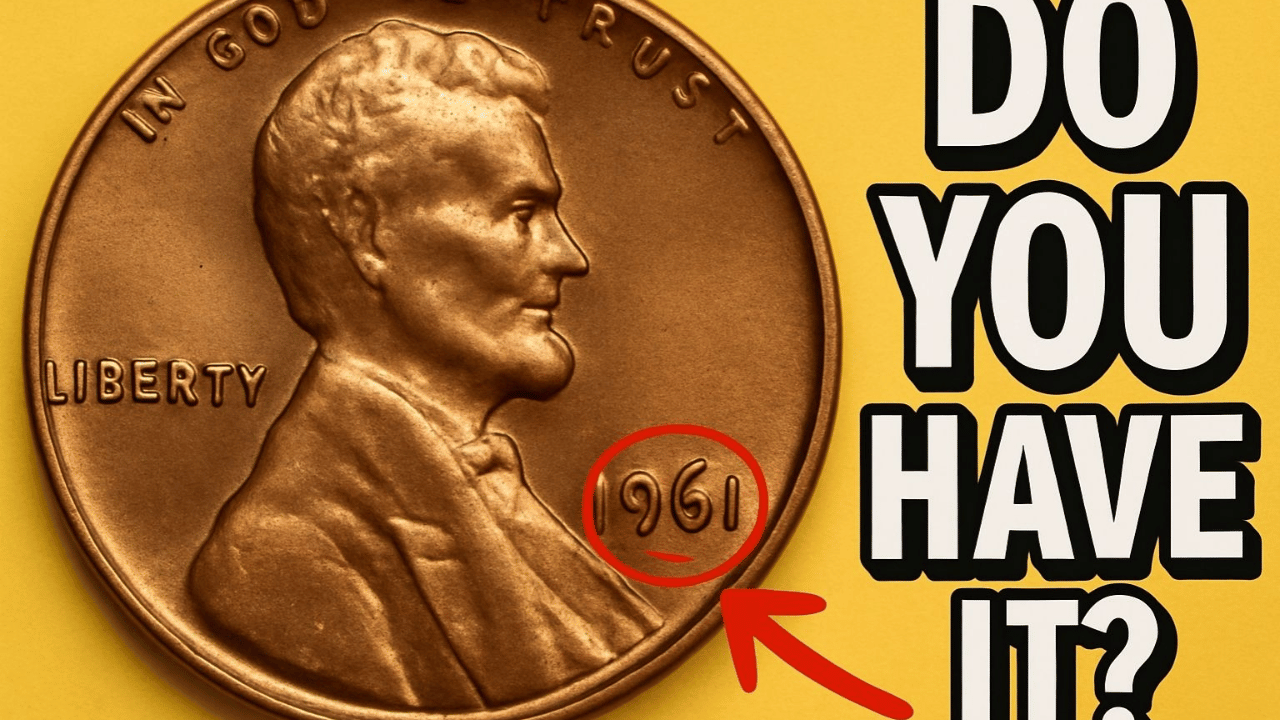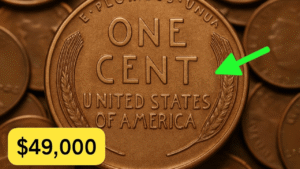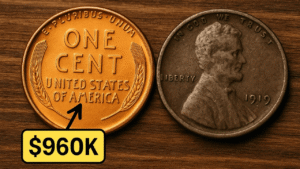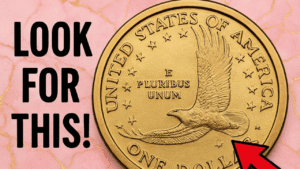You know those coins you scoop out of your cup holder before vacuuming the car? The ones that rattle around in your junk drawer or get left behind at self-checkouts like they’re cursed?
Yeah. One of them might be worth nearly a million bucks.
No exaggeration. One single copper penny—specifically, a 1943 Wheat Penny mistakenly minted in copper instead of steel—has sold for as much as $950,000. That’s not an urban legend. That’s real coin collectors putting real money on the table.
Let’s crack into this copper rabbit hole.
What Even Is a Wheat Penny?
Alright, flashback time. From 1909 to 1958, the U.S. Mint cranked out these one-cent coins with two wheat stalks on the reverse side. It was America’s way of saying, “Yo Abe, happy 100th birthday,” by plastering Lincoln’s face on a coin for the first time ever. That move actually sparked a bit of drama—some critics at the time thought putting a president’s face on money was too close to monarchy vibes.
Turns out, Americans were cool with it. The design stuck.
But here’s the kicker: while billions of these things were made, a handful came out… weird. And in the coin world, weird = valuable.
The 1943 Copper Penny: The Crown Jewel
Let’s talk about the big kahuna: the 1943 Copper Wheat Penny.
During World War II, the U.S. needed copper for ammo and military gear, so they switched penny production to zinc-coated steel for that year. But—and this is key—a few copper blanks from 1942 accidentally got fed into the minting machines.
Oops. A multi-hundred-thousand-dollar oops.
Experts believe fewer than 20 to 40 of these copper 1943 pennies still exist. One pristine specimen sold at auction for $144,000. Another? Private sale, $950,000.
Insane.
Here’s a quick breakdown:
| Year | Material | Estimated Value (High Grade) | Notes |
|---|---|---|---|
| 1943 | Steel (normal) | $0.10–$3 | Common |
| 1943 | Copper (error) | $100,000–$950,000+ | Ultra-rare |
| 1909-S VDB | Copper | $700–$2,000+ | Key date, collector favorite |
| 1914-D | Copper | $200–$3,000+ | Scarce in circulation |
Think You’ve Got One? Here’s What to Look For
If you’re now eyeballing your change like it owes you money—good instinct.
Here’s how to check if your Wheat Penny is something special:
- Date: Look for 1943. That’s the big one.
- Color/Weight: If it’s copper-colored instead of silvery gray, you’re onto something.
- Magnet Test: Steel pennies stick to a magnet. Copper ones won’t. If your 1943 penny doesn’t stick, pause everything.
- Mint Mark: “D” (Denver) and “S” (San Francisco) can add value.
- Don’t Clean It: Seriously. Scrubbing your coin can knock off hundreds, if not thousands, from its value. Let the gunk stay.
Where to Sell or Get It Checked Out
If you think you’ve struck penny gold, don’t post it on Facebook Marketplace for $20 and a McChicken. Get a professional opinion.
- PCGS (Professional Coin Grading Service)
- NGC (Numismatic Guaranty Company)
- Reputable coin dealers (preferably ones with an actual shop and no sketchy Craigslist vibes)
Don’t trust random online buyers who DM you with “CashApp ready.” This ain’t eBay for Beanie Babies.
Is This Just a Boomer Hobby?
Hard no.
Coin collecting—numismatics, if you wanna get fancy—is picking up steam again, especially among younger folks. TikTok, YouTube, and Instagram are full of collectors breaking down rare coin finds, thrift store hauls, and Coinstar horror stories. It’s the perfect mix of history, mystery, and low-effort treasure hunting.
And hey, unlike NFTs or crypto, this stuff you can actually hold in your hand.
The Fun Isn’t Just in the Value
Here’s the thing: even if your Wheat Penny isn’t worth a house down payment, there’s something wild about holding a piece of metal that’s older than your grandparents. Where’s it been? Whose pocket did it ride in during WWII? How many kids traded it for gum in 1952?
These coins tell stories. And sometimes, those stories come with a serious payday attached.
So next time you see a penny on the ground, don’t just walk by. Pick it up. Flip it over. Look closer.
You never know.
FAQs
Are all Wheat Pennies valuable?
Not really. Most are worth a few cents to a few bucks. But rare years and mint errors? That’s where the gold is.
Can I clean my coin before selling it?
Please no. Cleaned coins are basically ruined in the collector market.
Where do I get a coin appraised?
PCGS or NGC are the big dogs. Or go to a certified local coin dealer.
Is it even possible to find a valuable penny in circulation?
Slim chance, but yes. Coins show up in old jars, thrift shops, estate sales, and Coinstar trays.



